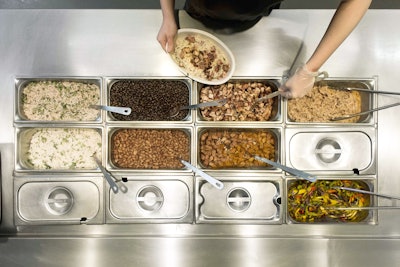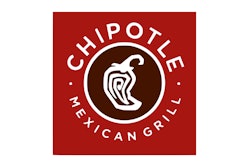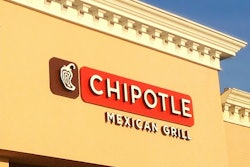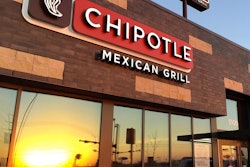
From its beginnings 22 years ago, Chipotle Mexican Grill set out to raise the bar in delivering fresh, sustainable, locally sourced food to U.S. customers. In the course of establishing close to 2,000 restaurants, the company gained customer trust with its commitment to transparent product sourcing, becoming a market leader in the rapidly growing fast casual segment.
Little did Steve Ells, chairman and co-CEO, know that he would also be tasked with raising the bar for food safety to ensure the company’s survival in the wake of E. coli and norovirus outbreaks that took the company by surprise. Ells told investors in February that, while Chipotle prided itself on its safety, the customer illnesses that began in October showed it needed to improve. In December, the company announced what it described as a pioneering safety program designed by Mansour Samadpour, Ph.D., CEO of Lake Forest Park, Wash.-based IEH Laboratories and Consulting Group.
Chipotle’s response to the outbreaks signifies challenges that the food industry as a whole faces in the modern environment. Improved transportation networks and a more globalized marketplace have extended many companies’ supply chains. Chipotle is one of many companies responding to consumer demand for fresher, locally sourced product. Manufacturers, distributors, retailers and restaurants continue to switch to more natural foods with fewer artificial ingredients.
Chipotle’s new safety program components include:
- High-resolution testing of all fresh produce in which a series of DNA-based tests ensure the quality and safety of ingredients before transporting them to restaurants.
- End-of-shelf-life testing in which ingredient samples are tested to ensure quality specifications are maintained throughout the ingredient’s shelf life.
- Continuous improvement throughout the supply chain using data from test results to strengthen the ability to monitor supplier performance.
- Improved training to ensure employees understand the company’s food safety standards.
On its website, the company notes it is testing samples of some of its produce using high-resolution methods. High-resolution testing refers to taking a large number of samples from a small amount of ingredient. This reduces the chance that unsafe product goes undetected. The company retained IEH Laboratories to identify opportunities to enhance food safety practices throughout its operations—from the farms that supply its food to its restaurants that prepare and serve it.
The website notes that more ingredients will be prepared in central kitchens rather than in restaurants. This ensures they are free of germs and minimizes the chance that they will acquire other germs while they are prepared in restaurants.
Other safety practices include marinating chicken and steak only in the evening after other fresh ingredients are put away, preventing the chance that the meat will have germs from other ingredients.
Chipotle suspected the source of the E. coli was beef imported from Australia, which it believed spread to other ingredients through cross-contamination, according to people familiar with the matter interviewed by The Wall Street Journal.
Federal authorities, who suspected produce as the likely cause, said cross-contamination was unlikely, and that Chipotle’s distribution records did not establish a link between Australian beef and the restaurants where people became ill.
Chipotle did not drop the Australian beef supplier, but said it was testing meat for pathogens before it arrived at restaurants.
Chipotle in January said that restaurants used to transfer arriving raw beef and chicken to bowls, and workers hand-rubbed it with adobo spices before marinating it in refrigerators and cooking it. The company recently altered the practice so that employees would add the rub in sealed bags so as not to directly handle any raw meat.
Workers would marinate chicken and beef after restaurants closed to prevent contamination with food prepared during the day, the company stated on its website in February. In March, the website only mentioned that raw chicken is marinated at night, making no mention of beef.
There will also be weekly restaurant inspections by trained field leaders, multiple annual inspections by corporate safety teams, independent health inspections and government inspections.
The plan also addresses the need to ensure growers have the resources to meet safety standards. About 12 percent of the company’s fresh produce came from local farms in 2015. To ensure these growers have the training and technology needed, Chipotle allocated $10 million to its Local Grower Support Initiative.
One question hovering over Chipotle’s initiative is the fact that the cause of the E. coli remains unknown. A company spokesperson told The Wall Street Journal in February that it will probably never know for sure what caused the outbreaks, which is why the company is taking significant safety measures.
Jack Payne, vice president of solution consulting at Aptean, an Alpharetta, Ga.-based provider of enterprise resource planning systems, thinks it’s premature to think that Chipotle’s local sourcing program caused the foodborne illness. “It could happen to any restaurant chain,” he says.
Is local sourcing at fault?
Payne notes that the business model of shipping ingredients to central kitchens and direct to restaurants is not new in the food supply chain. Nor does he think Chipotle was managing an overly ambitious number of products. Like any food company, a restaurant chain has to oversee the certification of its suppliers, the safe practices of its employees and the training of its employees. Some suppliers may need more training than others.
Payne says a restaurant chain has the opportunity to have a more connected supply chain than some other players in the food industry, such as processors that deliver to a larger and less uniform customer base.
Supply chain traceability intact?
Supply chain traceability, an element in food safety planning, came into question for Chipotle when a Centers for Disease Control and Prevention (CDC) official told The Wall Street Journal in February the company’s distribution records posed a challenge. The official declined to be specific, but said having traceability from field to slaughterhouse to restaurant can facilitate traceback, and that Chipotle articulated plans to make that system more robust.
In September 2015, a month prior to the first reported E. coli incident, Food Logistics reported on Chipotle’s cloud-based supply chain solution to track and manage data. The article noted the company’s suppliers and distributors already provided GS1’s Global Trade Item Numbers (GTINs) for each product destined for Chipotle kitchens. The system allows Chipotle to trace produce to the packing house from where it was shipped or to the field where it grew. The company said it improved efficiencies in quality assurance and logistics, along with providing real-time visibility of product at each step in the supply chain.
Hence, the company claimed it established a comprehensive traceability solution prior to the 2015 outbreaks.
Comprehensive traceability
In early February 2016, Monty Moran, Chipotle co-CEO, told investors the company was completing a comprehensive food-tracing system that would allow it to locate each ingredient from its source, such as the individual farm where it was produced, through its distribution system and individual restaurants, in real time. The system uses barcodes on each package for every ingredient. The ingredients get scanned at the source and at each point in the supply chain.
The investor remarks in February indicate the company improved its traceability initiative following the outbreak. The traceability program, however, is only one part of the overall safety plan. Other aspects of the plan are new for the company.
Safety experts weigh in
Food safety experts interviewed by Food Logistics recognized the improvements Chipotle is making in its food safety program, but pointed out that the program will only be as good as its execution. Most noted that Chipotle charted new territory in expanding its commitment to freshness and local sourcing, and left itself vulnerable to more contamination opportunities.
“It’s a constant balancing act in terms of where you invest,” says Chloe Demrovsky, executive director for New York, N.Y.-based Disaster Recovery Institute International (DRI), which is a non-profit that helps organizations prepare for and recover from disasters. This is especially challenging for a company using a large number of suppliers, some of which are likely to change periodically. “When you add complexity to a process or a program, there is potential for an elevated level of supply chain risk,” she says. “Organizations need a program to constantly manage the risk and its effects as they emerge, especially as the suppliers are constantly changing.”
Experts offered mixed views about the challenges posed by sourcing from local farms.
“The more local we become, the greater the chance that good agricultural practices aren’t being followed,” says Randy Fields, chairman and CEO of Park City Group and ReposiTrak, a Salt Lake City, Utah-based compliance management and track-and-trace solutions provider.
“Local doesn’t necessarily mean less safe,” says David Crownover, product manager for the National Restaurant Association’s (NRA) ServSafe restaurant food safety program. He says there are
definitely small farms that adhere to Global Food Safety Initiative (GFSI) standards.
One aspect of Chipotle’s plan is to move some of the food preparation from restaurants to centralized kitchens. This more centralized approach is meant to reduce the amount of food handling in restaurants.
Fields of ReposiTrak says sending product to centralized kitchens adds a step to the supply chain that can undermine the goal of extending product freshness in the restaurants.
Food safety experts generally commend Chipotle for committing to more aggressive product testing. Most, however, do not view this as the most important part of a food safety plan.
“It’s kind of hard to test your way to food safety,” says Bob Whitaker, chief science and technology officer of the Produce Marketing Association (PMA), based in Newark, Del. While there has been a lot of progress over the years in product testing technology, Whitaker says that, typically, contamination occurs very infrequently and is not uniform, and the levels are very low, so the odds of isolating that product randomly are very small. For testing to be effective, a company needs to suspect a widespread contamination that would permit detection.
Food companies also need to consider the possibility of contamination of non-food areas of their operations, Whitaker says. These include water sources, fertilizers, soil amendments, harvest equipment and production facilities. “There are some really good uses for testing,” he says. Producers need to evaluate these opportunities, set objectives, and make sure they choose the correct tests and design appropriate sampling plans.
“Any time you handle food, there’s a risk of cross-contamination,” says Whitaker. “You can’t eliminate all risks. They have to be managed.”
Chipotle’s decision to test smaller batch samples help improve chances for detecting infected produce, says Fields of ReposiTrak. But as pathogens become more antibiotic-resistant, he says foodborne illness risks will increase. He echoes nearly every expert interviewed in saying that prevention measures are more critical to improving safety than testing.
Safety is a highly cumbersome endeavor, Fields adds. Much of the work is administrative. A company that wants to manage its supply chain needs to keep track of its suppliers’ safety practices and, in some cases, the suppliers’ suppliers. “It’s a paperwork blizzard,” he says.
Enhanced DNA testing
Several experts cite improved testing capabilities as important aspects of food safety. In recent years, restaurant organizations have been relying on their suppliers to handle DNA testing, one of the more recent food safety technologies. Whether Chipotle’s DNA testing, in combination with other aspects of its plan, makes an important contribution to safety is a matter of debate among specialists.
Samadpour of IEH Laboratories and Consulting Group, the lab overseeing the DNA testing, told Food Logistics one aspect of the program is that the company will conduct DNA tests of 2,000-pound lots. He says this lot size marks a more aggressive test than programs that test larger-size lots.
“DNA is the greatest tool we have to ensure the safety and purity of our foods,” according to Danica Harbaugh Reynaud, Ph.D., global director of scientific innovation at NSF International, an Ann Arbor, Mich.-based third-party safety certification auditor. “DNA is arguably the most specific tool for identification of organisms from germs and microbes to plants and animals. It can be extremely sensitive, identifying trace levels of DNA from a wide range of species in a single sample—from GMOs to allergens and substitute species.”
Developing DNA testing capabilities requires a significant amount of cost and time, says Reynaud. However, once developed, the per-sample cost can be very inexpensive. The ultimate price depends on the number of items to be tested, as well as the types of contaminants the client needs as part of its testing.
The NRA’s Crownover says DNA testing, which became pervasive in the late 1990s, marked an improvement over the earlier culture-based and biochemical testing methods in terms of speed and effectiveness.
However, DNA testing is not foolproof, Crownover says. “There are limitations to product testing,” he says. “You can’t test 100 percent of the product.” Samples have to be enriched and then analyzed. Depending on the pathogen, the initial result sometimes has to be confirmed, which can take as long as five days. In some cases, packaged products are held up in warehouses, losing shelf life.
One question about DNA testing for identifying pathogens is the sample size, says Shari Plimpton, Ph.D., vice president and director of food industry programs at the Center for Innovative Food Technology in Toledo, Ohio. No matter how many samples are taken, it is possible to miss an infected leaf.
Plimpton, a certified Hazard Analysis and Critical Control Point (HACCP) instructor, commends Chipotle’s plan to test at both harvest and post-washing since contamination can occur during washing.
The length of time it takes to determine the presence of any pathogens in a food is also a concern in some situations. Cheryl Mooney, marketing manager at Thermo Fisher Scientific of Waltham, Mass., says polymerase chain reaction (PCR) tests for pathogen detection in foods normally takes around 24 hours to complete due to the target enrichment time required. She notes that PCR testing is most widely adopted in North America, where she estimates 35 percent of pathogens detected by food manufacturers are discovered using this technology, compared to Asia where the figure would be less than 5 percent.
This raises concerns for companies sourcing product from areas that are not conducting these tests.
Testing has different uses
DNA/genotype testing is commonly used in the food supply chain for ensuring that the food processing environment—the food-contact preparation and packaging equipment—is not contaminated with specific pathogenic microorganisms, says Donna Schaffner, associate director of food safety, quality assurance and training at the Rutgers Food Innovation Center in Bridgeton, N.J.
Under the Food Safety Modernization Act (FSMA) Preventive Controls for Human Food rule, environmental monitoring generally would be required if there is a likelihood of contamination with an environmental pathogen of a post-lethality exposed, ready-to-eat food prior to the packaging step, which is determined by a hazard analysis to be a hazard requiring a preventive control.
John Kukoly, director of BRC Americas at BRC Global Standards, says testing for pathogens is secondary to utilization of food safety management systems that minimize exposure and risk, rather than testing it afterward. BRC conducts audits to certify safety standards recognized by GFSI. Kukoly was one of several experts who cited DNA testing as having more application to expose fraudulent food labeling than for identifying harmful pathogens.
Russell Walker, Ph.D., clinical associate professor at the Kellogg School of Management at Northwestern University in Evanston, Ill., agrees minimizing cross-contamination in the restaurant kitchens is important. He thinks it is likely the E. coli spread via cross-contamination in Chipotle kitchens.
Walker is among those who view DNA testing as having significant use in verifying the authenticity of ingredients. He says this is important in light of the growing amount of attributes that consumers are looking for. As attributes, such as species, place of origin and GMO content, become more important, the market for fraudulent package claims is increasing. He says that the problem is most pervasive in seafood since consumers are not familiar with how to identify fish species.
Testing technology advances
While experts have different views about the way Chipotle is using DNA testing, the science is not standing still. Some say emerging genome sequencing technology provides more powerful pathogen detection.
Clear Labs, a Menlo Park, Calif.-based lab focused on the food supply chain, developed a process that sequences the DNA of food samples and sends the data to the cloud for analysis. Under this system, it is not necessary for the lab to know which pathogen it is looking for to identify the sample’s full DNA composition, says Mahni Ghorashi, co-founder. The system allows a lab to identify all pathogens or unexpected ingredients in a given sample.
Clear Labs, founded in 2014, adapted next-generation genomic sequencing for the food supply chain, according to Ghorashi. He says this technology, which he calls next-generation sequencing (NGS), is important given the globalization of the food supply chain and the difficulty of tracking ingredients. Ghorashi acknowledges that the NGS test is not as fast as the PCR test, which could be important for some food clients.
Ghorashi agrees the technology will find its greatest application in testing products for inaccurate or fraudulent label information.
NSF International also introduced an NGS technology, following its acquisition earlier this year of Richmond, Calif.-based AuthenTechnologies. “We have developed a single method for simultaneously testing a food product for all of its ingredients, allergens, fillers and GMOs,” says Reynaud. “Therefore, it can be used as a routine test from seed to shelf—from the living organisms to the finished products.”
Sample6, a Cambridge, Mass.-based food safety diagnostic company, offers an on-site test that detects pathogens in seven hours or less. The company claims its “bio-illumination” platform allows it to detect pathogen cells without enrichment. “The problem for retailers/restaurants is that the old testing methods really can’t be done onsite because they require enrichment, which means growing a lot of the pathogen (e.g., E. coli). Or the samples are sent offsite for testing with results received in two to four days,” says Tim Curran, CEO. “That makes it very hard for a fresh, locally sourced ingredients restaurant like Chipotle to keep its restaurants and food well-tested and safe.”
Whitaker of the PMA considers whole genome sequencing a significant advancement in pathogen identification.
Mooney of Thermo Fisher Scientific says NGS offers many exciting possibilities, some of which are already being employed within the scope of food safety, but it is not yet affordable for routine pathogen analysis.
The NRA’s Crownover says the increasing reports of foodborne illness in recent years more likely reflect better detection capabilities. He thinks the food industry is doing a good job working with government to improve safe practices. “It’s all about collaboration,” he says.
Whitaker says major improvements in sharing data over the last 20 years is making the food supply safer. He commends the work of the CDC, public health agencies and PulseNet, a CDC communications network.
As science progresses, the ability to detect outbreaks will improve. Chipotle raised the bar when it embarked on expanding the use of fresh, locally sourced ingredients. It charted new territory in safety as well as food chain traceability.


















